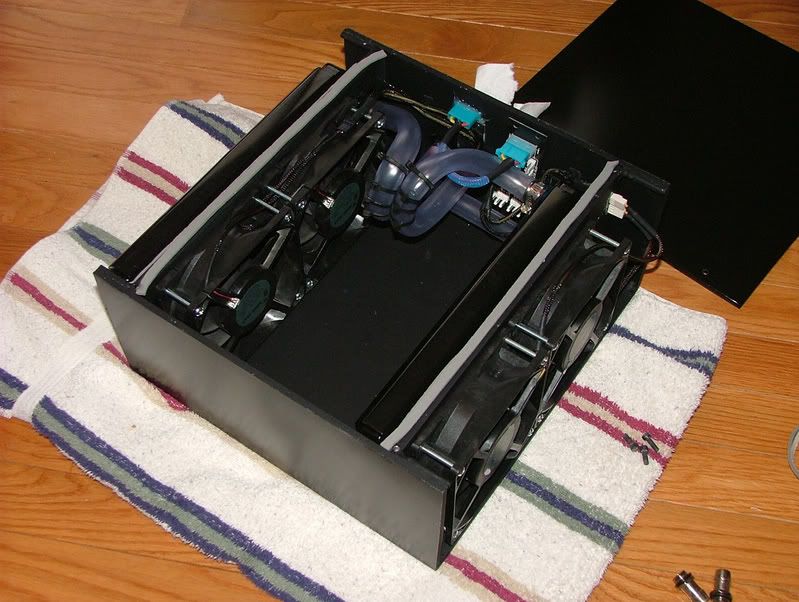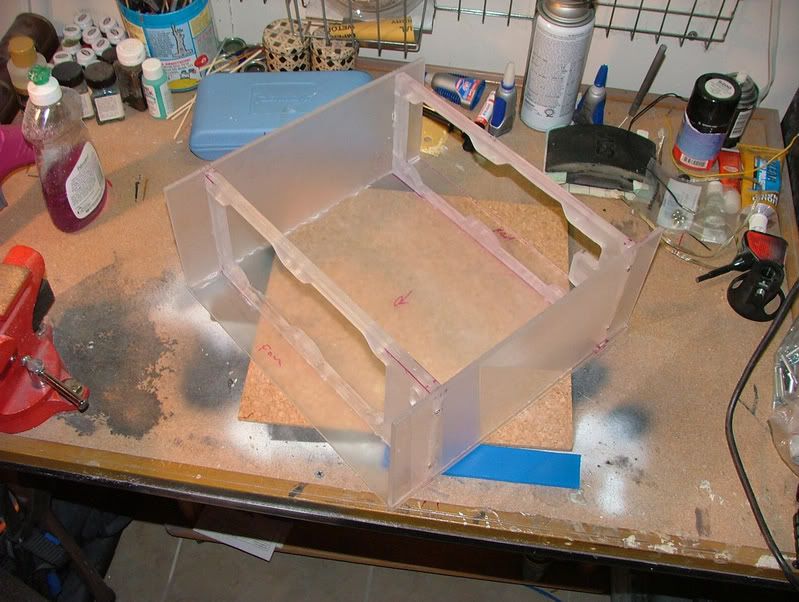Ok, I'm going to throw an idea out there and get some opinions from the pros.
Background: I am new to water cooling, this will be my first build. I currently have a Q6600 CPU and a 8800 GTS GPU. I plan on over-clocking both and water cooling both. I'm trying to get the entire system to fit cleanly inside of a TT Armor full tower case.
Now, originally I was thinking of using a ThermoChill PA120.2 for my rad with 2 low RPM fans pulling air through (I want this setup to be quiet as well as efficient). However, after doing some more research, I am wondering if a single 2x120mm radiator will be enough to handle an over-clocked quad core and the 8800 GTS.
So, I got to thinking, what if purchased a pair of SwifTech MCR-220 radiators and made a sandwich of sorts.
Something like this:
||Fan|| |||RAD 1||| ||Fan|| |||RAD 2||| |Front of case
Radiator 1 (the back radiator) would be the first radiator in the cooling sequence. Once the water passed through radiator 1, it would then loop through radiator 2 (in the front). Theoretically the progressively cooler radiator.
The reason for this little idea was so I could double up my radiators BUT still be able to fit them in the case. This little radiator sandwich should fit nicely in the lower 5.25 bays where fresh air can easily be pulled through the front of the case.
So what do you think? 2 radiators and 4 fans. The back radiator would be a push/pull config and the front, a simple pull config. Granted the warm air from the front radiator will pass through the back radiator but I'm not sure how adverse that effect would be.
Oh yeah, other components in the system will be:
CPU block: Fuzion
GPU block: EK full coverage block (still not sure on this as full coverage is expensive)
Pump: Swiftech MCP655
Tubing: Masterkleer Tubing 7/16" ID
Reservoir: Swiftech MCRES-Micro
Any and all recommendations are welcomed. Feel free to tell me I'm crazy... I don't get offended easily
Background: I am new to water cooling, this will be my first build. I currently have a Q6600 CPU and a 8800 GTS GPU. I plan on over-clocking both and water cooling both. I'm trying to get the entire system to fit cleanly inside of a TT Armor full tower case.
Now, originally I was thinking of using a ThermoChill PA120.2 for my rad with 2 low RPM fans pulling air through (I want this setup to be quiet as well as efficient). However, after doing some more research, I am wondering if a single 2x120mm radiator will be enough to handle an over-clocked quad core and the 8800 GTS.
So, I got to thinking, what if purchased a pair of SwifTech MCR-220 radiators and made a sandwich of sorts.
Something like this:
||Fan|| |||RAD 1||| ||Fan|| |||RAD 2||| |Front of case
Radiator 1 (the back radiator) would be the first radiator in the cooling sequence. Once the water passed through radiator 1, it would then loop through radiator 2 (in the front). Theoretically the progressively cooler radiator.
The reason for this little idea was so I could double up my radiators BUT still be able to fit them in the case. This little radiator sandwich should fit nicely in the lower 5.25 bays where fresh air can easily be pulled through the front of the case.
So what do you think? 2 radiators and 4 fans. The back radiator would be a push/pull config and the front, a simple pull config. Granted the warm air from the front radiator will pass through the back radiator but I'm not sure how adverse that effect would be.
Oh yeah, other components in the system will be:
CPU block: Fuzion
GPU block: EK full coverage block (still not sure on this as full coverage is expensive)
Pump: Swiftech MCP655
Tubing: Masterkleer Tubing 7/16" ID
Reservoir: Swiftech MCRES-Micro
Any and all recommendations are welcomed. Feel free to tell me I'm crazy... I don't get offended easily
![[H]ard|Forum](/styles/hardforum/xenforo/logo_dark.png)



